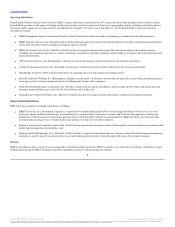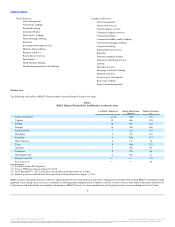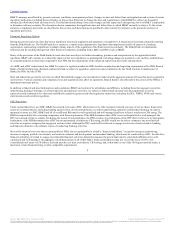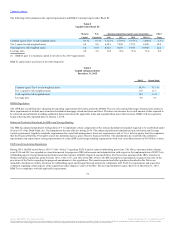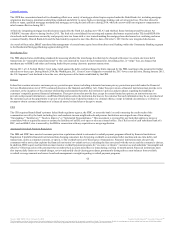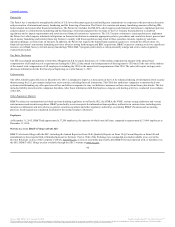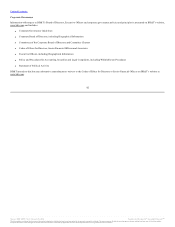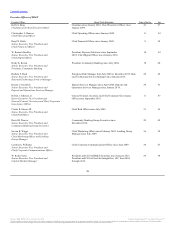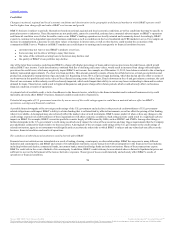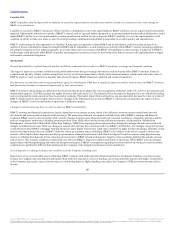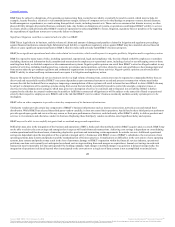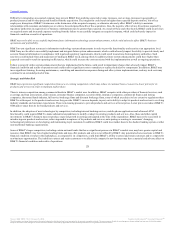BB&T 2015 Annual Report Download - page 17
Download and view the complete annual report
Please find page 17 of the 2015 BB&T annual report below. You can navigate through the pages in the report by either clicking on the pages listed below, or by using the keyword search tool below to find specific information within the annual report.
TableofContents
The CFPB has concentrated much of its rulemaking efforts on a variety of mortgage-related topics required under the Dodd-Frank Act, including mortgage
origination disclosures, minimum underwriting standards and ability to repay, high-cost mortgage lending, and servicing practices. The rules related to
ability to repay, qualified mortgage standards and mortgage servicing became effective during 2014, while the escrow and loan originator compensation
rules became effective during 2013.
A final rule integrating mortgage loan disclosures required by the Truth in Lending Act (“TILA”) and the Real Estate Settlement and Procedures Act
(“RESPA”) became effective during October 2015. The final rule consolidated four existing and separate disclosures required under TILA and RESPA for
closed-end credit transactions secured by real property into two forms with a view towards making the mortgage loan disclosures less confusing and more
consumer friendly. Branch Bank delivered the functionality required to meet the effective date of October 3, 2015 for the new integrated disclosures.
As a result of these rules, BB&T transferred the management of certain home equity loans from direct retail lending within the Community Banking segment
to the Residential Mortgage Banking segment during 2014.
Interchange Fees
The FRB adopted rules establishing standards for assessing whether the interchange fees that may be charged with respect to certain electronic debit
transactions are “reasonable and proportional” to the costs incurred by issuers for such transactions. Interchange fees, or “swipe” fees, are charges that
merchants pay to BB&T and other card-issuing banks for processing electronic payment transactions.
During 2013, a U.S. Federal District Court judge ruled against the debit card interchange fee limits imposed by the FRB, resulting in the potential for further
reductions to these caps. During March 2014, the Washington, D.C. Circuit Court of Appeals overturned the 2013 lower court decision. During January 2015,
the U.S. Supreme Court declined to hear the case, which preserved the limits established by the FRB.
Privacy
Federal law contains extensive customer privacy protection provisions, including substantial customer privacy protections provided under the Financial
Services Modernization Act of 1999 (commonly known as the Gramm-Leach-Bliley Act). Under these provisions, a financial institution must provide to its
customers, at the inception of the customer relationship and annually thereafter, the institution’s policies and procedures regarding the handling of
customers’ nonpublic personal financial information. These provisions also provide that, except for certain limited exceptions, an institution may not
provide such personal information to unaffiliated third parties unless the institution discloses to the customer that such information may be so provided and
the customer is given the opportunity to opt out of such disclosure. Federal law makes it a criminal offense, except in limited circumstances, to obtain or
attempt to obtain customer information of a financial nature by fraudulent or deceptive means.
CRA
The CRA requires Branch Bank’s primary federal bank regulatory agency, the FDIC, to assess the bank’s record in meeting the credit needs of the
communities served by the bank, including low- and moderate-income neighborhoods and persons. Institutions are assigned one of four ratings:
“Outstanding,” “Satisfactory,” “Needs to Improve” or “Substantial Noncompliance.” This assessment is reviewed for any bank that applies to merge or
consolidate with or acquire the assets or assume the liabilities of an IDI, or to open or relocate a branch office. The CRA record of each subsidiary bank of a
FHC, such as BB&T, also is assessed by the FRB in connection with any acquisition or merger application.
Automated Overdraft Payment Regulation
The FRB and FDIC have enacted consumer protection regulations related to automated overdraft payment programs offered by financial institutions.
Regulation E prohibits financial institutions from charging consumers fees for paying overdrafts on automated teller machine and one-time debit card
transactions, unless a consumer consents, or opts in, to the overdraft service for those types of transactions. Financial institutions must also provide
consumers with a notice that explains the financial institution’s overdraft services, including the fees associated with the service and the consumer’s choices.
In addition, FDIC-supervised institutions must monitor overdraft payment programs for “excessive or chronic” customer use and undertake “meaningful and
effective” follow-up action with customers that overdraw their accounts more than six times during a rolling 12-month period. Financial institutions must
also impose daily limits on overdraft charges, review and modify check-clearing procedures, prominently distinguish account balances from available
overdraft coverage amounts and ensure board and management oversight regarding overdraft payment programs.
13
Source: BB&T CORP, 10-K, February 25, 2016 Powered by Morningstar® Document Research℠
The information contained herein may not be copied, adapted or distributed and is not warranted to be accurate, complete or timely. The user assumes all risks for any damages or losses arising from any use of this information,
except to the extent such damages or losses cannot be limited or excluded by applicable law. Past financial performance is no guarantee of future results.



